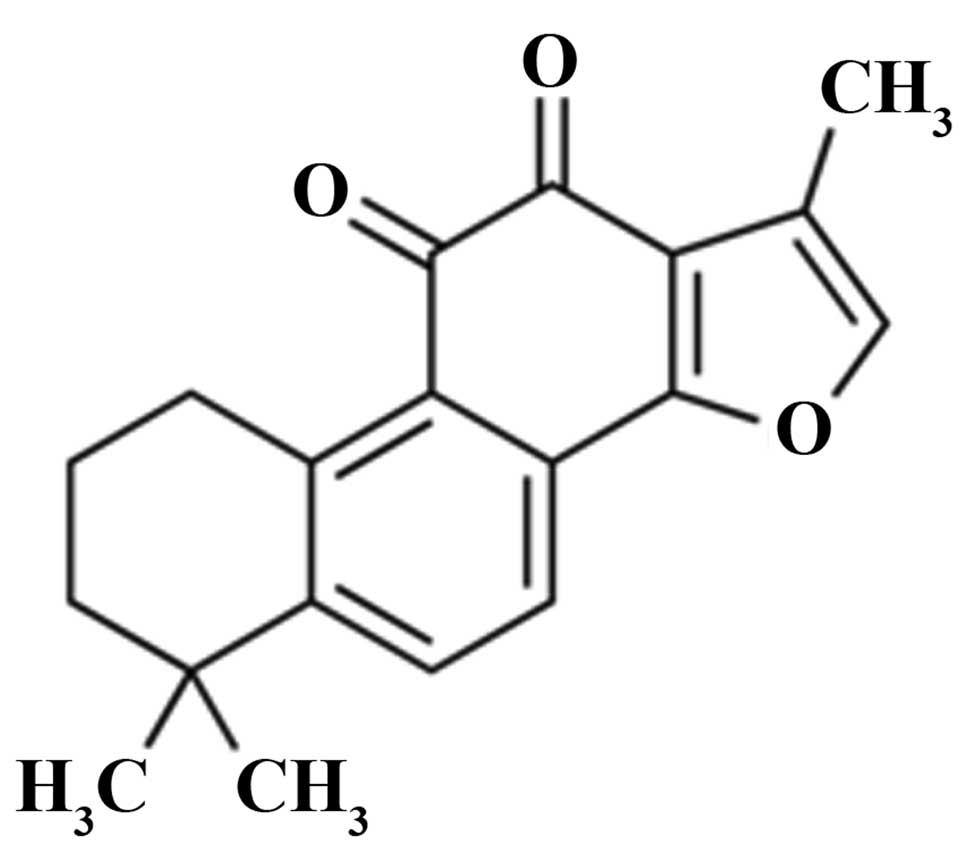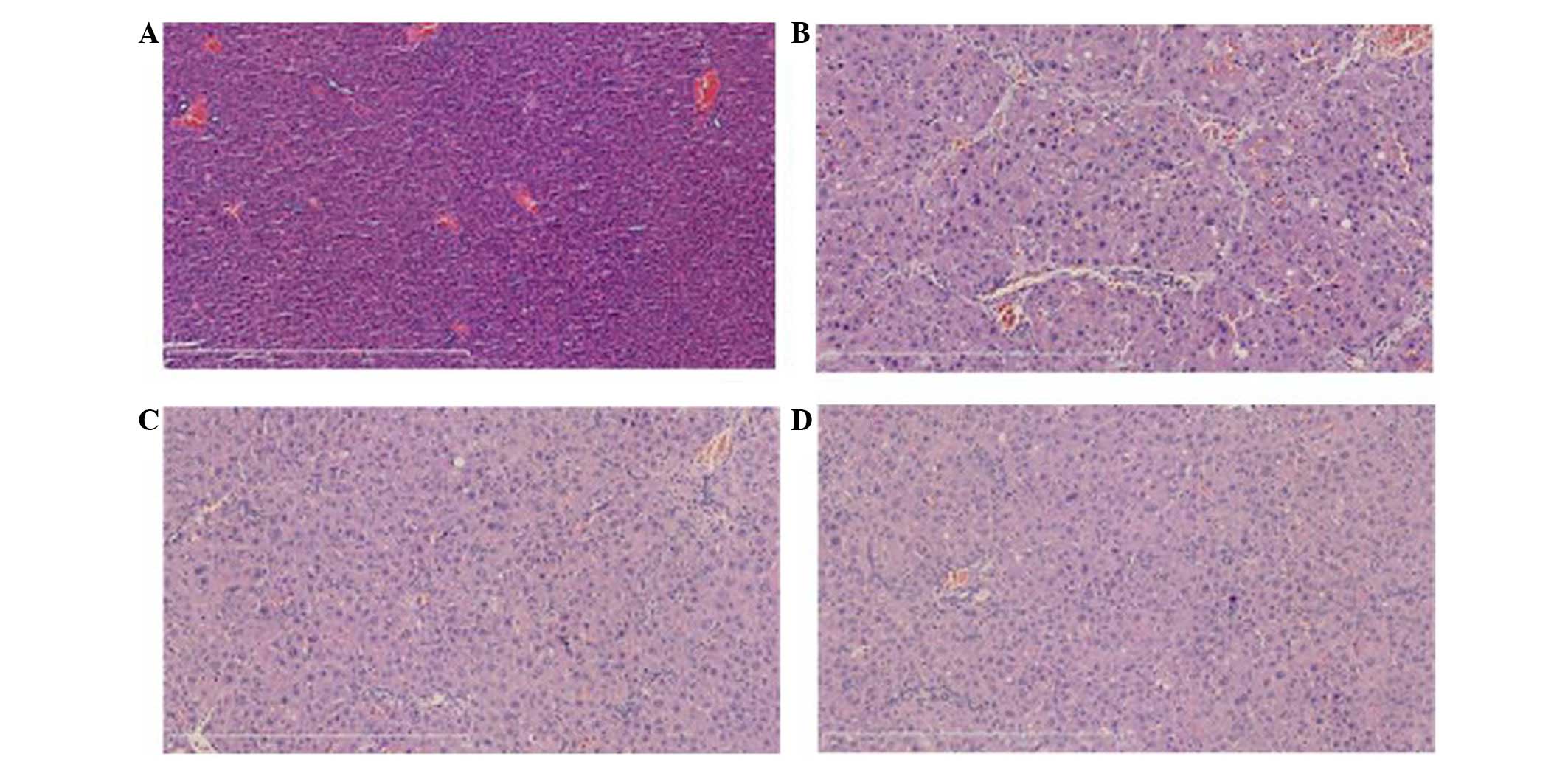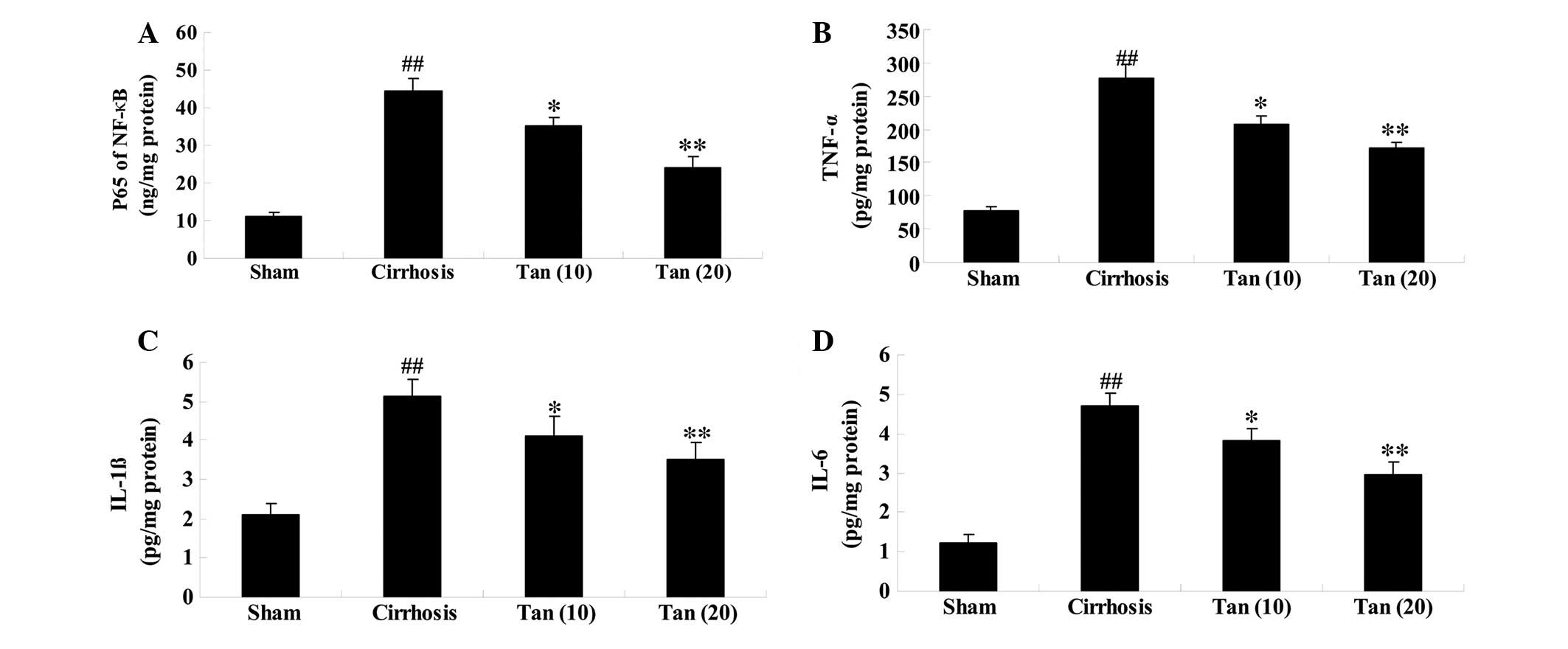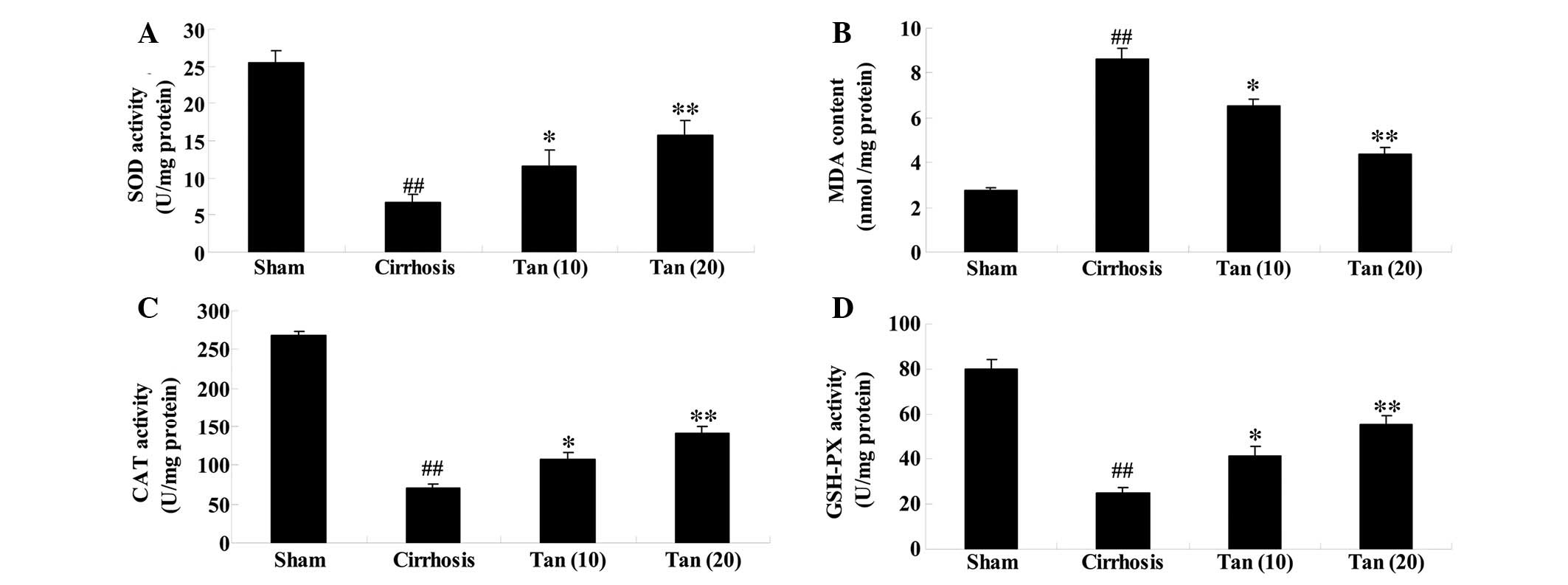|
1
|
Mokdad AA, Lopez AD, Shahraz S, Lozano R,
Mokdad AH, Stanaway J, Murray CJL and Naghavi M: Liver cirrhosis
mortality in 187 countries between 1980 and 2010: A systematic
analysis. BMC Med. 12:1452014. View Article : Google Scholar : PubMed/NCBI
|
|
2
|
Ciećko-Michalska I, Wójcik J, Senderecka
M, Wyczesany M, Binder M, Szewczyk J, Dziedzic T, Słowik A and Mach
T: Cognitive functions in patients with liver cirrhosis: A tendency
to commit more memory errors. Med Sci Monit. 19:283–288. 2013.
View Article : Google Scholar
|
|
3
|
Matsuda I, Okada M, Inoue T, Tokugawa T,
Ogawa H and Hirota S: Primary follicular lymphoma of the spleen
incidentally found in a patient with alcohol- and hepatitis
C-related liver cirrhosis. Int J Clin Exp Pathol. 7:4484–4488.
2014.PubMed/NCBI
|
|
4
|
Wang X, Xie G, Wang X, Zhou M, Yu H, Lin
Y, Du G, Luo G and Liu P: Urinary metabolite profiling offers
potential for differentiation of liver-kidney yin deficiency and
dampness-heat internal smoldering syndromes in posthepatitis B
cirrhosis patients. Evid Based Complement Alternat Med.
2015:4649692015. View Article : Google Scholar : PubMed/NCBI
|
|
5
|
Deng C, Tao R, Yu SZ and Jin H:
Sulforaphane protects against 6-hydroxydopamine-induced
cytotoxicity by increasing expression of heme oxygenase-1 in a
PI3K/Akt-dependent manner. Mol Med Rep. 5:847–851. 2012.
|
|
6
|
Chakravarti R, Gupta K, Majors A, Ruple L,
Aronica M and Stuehr DJ: Novel insights in mammalian catalase heme
maturation: EFFect of NO and thioredoxin-1. Free Radic Biol Med.
82:105–113. 2015. View Article : Google Scholar : PubMed/NCBI
|
|
7
|
Bao LJ, Jaramillo MC, Zhang ZB, Zhang YX,
Yao M, Zhang DD and Yi XF: Nrf2 induces cisplatin resistance
through activation of autophagy in ovarian carcinoma. Int J Clin
Exp Pathol. 7:1502–1513. 2014.PubMed/NCBI
|
|
8
|
Yang D, Zhang W, Song L and Guo F:
Andrographolide protects against cigarette smoke-induced lung
inflammation through activation of heme oxygenase-1. J Biochem Mol
Toxicol. 27:259–265. 2013. View Article : Google Scholar : PubMed/NCBI
|
|
9
|
Fauconneau B, Petegnief V, Sanfeliu C,
Piriou A and Planas AM: Induction of heat shock proteins (HSPs) by
sodium arsenite in cultured astrocytes and reduction of hydrogen
peroxide-induced cell death. J Neurochem. 83:1338–1348. 2002.
View Article : Google Scholar : PubMed/NCBI
|
|
10
|
Gao S, Liu Z, Li H, Little PJ, Liu P and
Xu S: Cardiovascular actions and therapeutic potential of
tanshinone IIA. Atherosclerosis. 220:3–10. 2012. View Article : Google Scholar
|
|
11
|
Tian XH and Wu JH: Tanshinone derivatives:
A patent review (January 2006 – September 2012). Expert Opin Ther
Pat. 23:19–29. 2013. View Article : Google Scholar
|
|
12
|
Xu S and Liu P: Tanshinone II-A: New
perspectives for old remedies. Expert Opin Ther Pat. 23:149–153.
2013. View Article : Google Scholar
|
|
13
|
Prentø P: Van Gieson's picrofuchsin. The
staining mechanisms for collagen and cytoplasm, and an examination
of the dye diffusion rate model of differential staining.
Histochemistry. 99:163–174. 1993. View Article : Google Scholar : PubMed/NCBI
|
|
14
|
Kawanaka H, Akahoshi T, Itoh S, Iguchi T,
Harimoto N, Uchiyama H, Yoshizumi T, Shirabe K, Takenaka K and
Maehara Y: Optimizing risk stratification in portal vein thrombosis
after splenectomy and its primary prophylaxis with antithrombin III
concentrates and danaparoid sodium in liver cirrhosis with portal
hypertension. J Am Coll Surg. 219:865–874. 2014. View Article : Google Scholar : PubMed/NCBI
|
|
15
|
Yu F, Lin Z, Zheng J, Gao S, Lu Z and Dong
P: Suppression of collagen synthesis by Dicer gene silencing in
hepatic stellate cells. Mol Med Rep. 9:707–714. 2014.
|
|
16
|
Iwaisako K, Hatano E, Taura K, Nakajima A,
Tada M, Seo S, Tamaki N, Sato F, Ikai I, Uemoto S and Kinoshita M:
Loss of Sept4 exacerbates liver fibrosis through the dysregulation
of hepatic stellate cells. J Hepatol. 49:768–778. 2008. View Article : Google Scholar : PubMed/NCBI
|
|
17
|
Zhang X, Ma Z, Liang Q, Tang X, Hu D, Liu
C, Tan H, Xiao C, Zhang B, Wang Y and Gao Y: Tanshinone IIA exerts
protective effects in a LCA-induced cholestatic liver model
associated with participation of pregnane X receptor. J
Ethnopharmacol. 164:357–367. 2015. View Article : Google Scholar : PubMed/NCBI
|
|
18
|
Qi YY, Xiao L, Zhang LD, Song SH, Mei Y,
Chen T, Tang JM, Liu F, Ding GS, Shi YZ and Wang QX: Tanshinone IIA
pretreatment attenuates hepatic ischemia-reperfusion. Front Biosci
(Elite Ed). 4:1303–1313. 2012. View
Article : Google Scholar
|
|
19
|
Agca CA, Tuzcu M, Hayirli A and Sahin K:
Taurine ameliorates neuropathy via regulating NF-κB and Nrf2/HO-1
signaling cascades in diabetic rats. Food Chem Toxicol. 71:116–121.
2014. View Article : Google Scholar : PubMed/NCBI
|
|
20
|
Chen Y, Huang F, Wang D, Weng Z and Deng
Z: Upregulation of heme oxygenase-1 expression may facilitate
memory and learning in mice. Exp Ther Med. 5:1491–1495.
2013.PubMed/NCBI
|
|
21
|
Wunder C and Potter RF: The heme oxygenase
system: Its role in liver inflammation. Curr Drug Targets
Cardiovasc Haematol Disord. 3:199–208. 2003. View Article : Google Scholar : PubMed/NCBI
|
|
22
|
Hachfi L, Simide R, Richard S, Couvray S,
Coupe S, Gaillard S, Pierre S, Grillasca JP and Prevot-D'Alvise N:
Effect of water temperature increase on HO-1 expression in European
sea bass (Dicentrarchus labrax L.) tissues. Cell Mol Biol
(Noisy-le-grand). (Suppl.)58:OL1752–OL1756. 2012.
|
|
23
|
Li H, Zhou X and Zhang J: Induction of
heme oxygenase-1 attenuates lipopolysaccharide-induced inflammasome
activation in human gingival epithelial cells. Int J Mol Med.
34:1039–1044. 2014.PubMed/NCBI
|
|
24
|
Chen TH, Hsu YT, Chen CH, Kao SH and Lee
HM: Tanshinone IIA from Salvia miltiorrhiza induces heme
oxygenase-1 expression and inhibits lipopolysaccharide-induced
nitric oxide expression in RAW 264.7 cells. Mitochondrion.
7:101–105. 2007. View Article : Google Scholar : PubMed/NCBI
|
|
25
|
Liu Z, Wang J, Huang E, Gao S, Li H, Lu J,
Tian K, Little PJ, Shen X, Xu S and Liu P: Tanshinone IIA
suppresses cholesterol accumulation in human macrophages: Role of
heme oxygenase-1. J Lipid Res. 55:201–213. 2014. View Article : Google Scholar :
|
|
26
|
Barak V, Selmi C, Schlesinger M, Blank M,
Agmon-Levin N, Kalickman I, Gershwin ME and Shoenfield Y: Serum
inflammatory cytokines, complement components, and soluble
interleukin 2 receptor in primary biliary cirrhosis. J Autoimmun.
33:178–182. 2009. View Article : Google Scholar : PubMed/NCBI
|
|
27
|
Wang JG, Bondy SC, Zhou L, Yang FZ, Ding
ZG, Hu Y, Tian Y, Wen PY, Luo H, Wang F, et al: Protective effect
of Tanshinone IIA against infarct size and increased HMGB1, NFκB,
GFAP and apoptosis consequent to transient middle cerebral artery
occlusion. Neurochem Res. 39:295–304. 2014. View Article : Google Scholar
|
|
28
|
Chen Y, Wu X, Yu S, Lin X, Wu J, Li L,
Zhao J and Zhao Y: Neuroprotection of tanshinone IIA against
cerebral ischemia/reperfusion injury through inhibition of
macrophage migration inhibitory factor in rats. PLoS One.
7:e401652012. View Article : Google Scholar : PubMed/NCBI
|
|
29
|
Apel K and Hirt H: Reactive oxygen
species: metabolism, oxidative stress, and signal transduction.
Annu Rev Plant Biol. 55:373–399. 2004. View Article : Google Scholar : PubMed/NCBI
|
|
30
|
McCord JM: The evolution of free radicals
and oxidative stress. Am J Med. 108:652–659. 2000. View Article : Google Scholar : PubMed/NCBI
|
|
31
|
Mittler R: Oxidative stress, antioxidants
and stress tolerance. Trends Plant Sci. 7:405–410. 2002. View Article : Google Scholar : PubMed/NCBI
|
|
32
|
Szuster-Ciesielska A, Daniluk J and
Kandefer-Szerszeń M: Oxidative stress in the blood of patients with
alcohol-related liver cirrhosis. Med Sci Monit. 8:CR419–424.
2002.PubMed/NCBI
|
|
33
|
Medina J and Moreno-Otero R:
Pathophysiological basis for antioxidant therapy in chronic liver
disease. Drugs. 65:2445–2461. 2005. View Article : Google Scholar : PubMed/NCBI
|
|
34
|
Koch OR, Pani G, Borrello S, et al:
Oxidative stress and antioxidant defenses in ethanol-induced cell
injury. Mol Aspects Med. 25:191–198. 2004. View Article : Google Scholar : PubMed/NCBI
|
|
35
|
Patel SN, Pandya K, Clark GJ, Parikh MC
and Lau-Cam CA: Comparison of taurine and pantoyltaurine as
antioxidants in vitro and in the central nervous system of diabetic
rats. Exp Toxicol Pathol. In press.
|
|
36
|
Li S, Tan HY, Wang N, et al: The Role of
Oxidative Stress and Antioxidants in Liver Diseases. Int J Mol Sci.
16:26087–26124. 2015. View Article : Google Scholar : PubMed/NCBI
|
|
37
|
Oettl K, Stadlbauer V, Petter F,
Greilberger J, Putz-Bankuti C, Hallström S, Lackner C and Stauber
RE: Oxidative damage of albumin in advanced liver disease. Biochim
Biophys Acta. 469–473. 2008. View Article : Google Scholar : PubMed/NCBI
|
|
38
|
Chan P, Chen YC, Lin LJ, Cheng TH, Anzai
K, Chen YH, Liu ZM, Lin JG and Hong HJ: Tanshinone IIA attenuates
H2O2-induced injury in human umbilical vein
endothelial cells. Am J Chin Med. 40:1307–1319. 2012. View Article : Google Scholar
|
|
39
|
Zhang X, He D, Xu L and Ling S: Protective
effect of tanshinone IIA on rat kidneys during hypothermic
preservation. Mol Med Rep. 5:405–409. 2012.
|
|
40
|
Shin DY, Kim GY, Kim ND, Jung JH, Kim SK,
Kang HS and Choi YH: Induction of apoptosis by pectenotoxin-2 is
mediated with the induction of DR4/DR5, Egr-1 and NAG-1, activation
of caspases and modulation of the Bcl-2 family in p53-deficient
Hep3B hepatocellular carcinoma cells. Oncol Rep. 19:517–526.
2008.PubMed/NCBI
|
|
41
|
Lambrecht J, Mannaerts I and van Grunsven
LA: The role of miRNAs in stress-responsive hepatic stellate cells
during liver fibrosis. Front Physiol. 6:2092015. View Article : Google Scholar : PubMed/NCBI
|
|
42
|
Zhou WC, Zhang QB and Qiao L: Pathogenesis
of liver cirrhosis. World J Gastroenterol. 20:7312–7324. 2014.
View Article : Google Scholar : PubMed/NCBI
|
|
43
|
Park ST, Jang JW, Kim GD, Park JA, Hur W,
Woo HY, Kim JD, Kwon JH, Yoo CR and Bae SH: Beneficial effect of
metronomic chemotherapy on tumor suppression and survival in a rat
model of hepatocellular carcinoma with liver cirrhosis. Cancer
Chemother Pharmacol. 65:1029–1037. 2010. View Article : Google Scholar
|
|
44
|
Luo Y, Xu DQ, Dong HY, Zhang B, Liu Y, Niu
W, Dong MQ and Li ZC: Tanshinone IIA inhibits hypoxia-induced
pulmonary artery smooth muscle cell proliferation via
Akt/Skp2/p27-associated pathway. PLoS One. 8:e567742013. View Article : Google Scholar : PubMed/NCBI
|
|
45
|
Jang SI, Kim HJ, Kim YJ, Jeong SI and You
YO: Tanshinone IIA inhibits LPS-induced NF-kappaB activation in RAW
264.7 cells: Possible involvement of the NIK-IKK, ERK1/2, p38 and
JNK pathways. Eur J Pharmacol. 542:1–7. 2006. View Article : Google Scholar : PubMed/NCBI
|

















